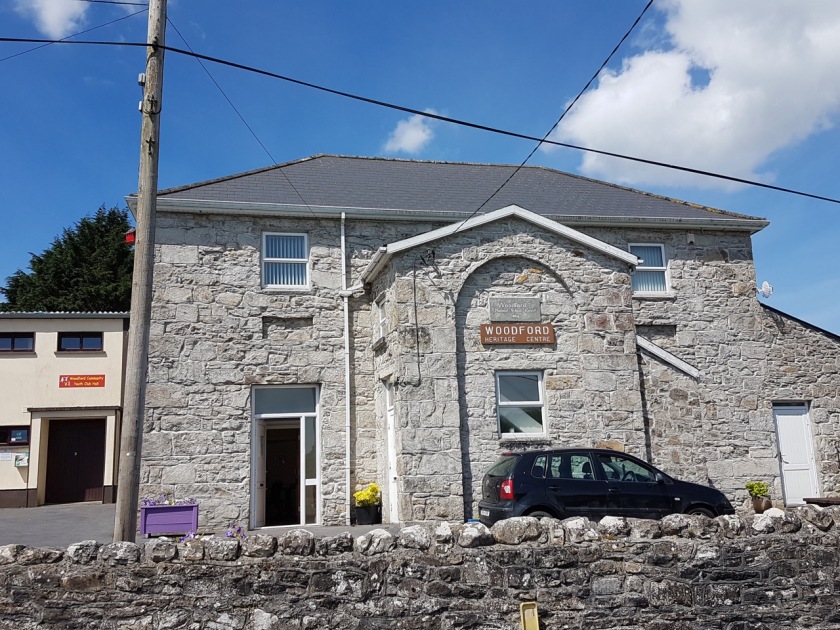My quest to discover my Irish ancestors began with my paternal ancestors, the Hayes family. I learnt about the challenges of Irish family history research by studying my Hayes ancestors. The beginning was easy, looking at ship arrivals in South Australia. I soon discovered that they arrived in South Australia on 23 August 1849 on the ship Eliza. The passenger list recorded that they were from County Galway: Thomas and Honora Hayes, aged 38 and 34, and their three children, Mary aged 10, Patrick aged 9 and Thomas who was an infant.
Where had they come from in County Galway? This next step in my research was much harder. It took me the best part of a year to learn that they were from the townland of Derrygoolin, in the far south-eastern corner of County Galway, bordering on County Clare and Lough Derg. One day, I thought, I will go to this townland to see it for myself.
On a warm summer’s day in June this year, that day finally arrived. It was with a great sense of anticipation that we set off from Ennis and drove across the pleasant but unremarkable countryside of eastern County Clare, so different from the rugged and dramatic Atlantic coastline. From Scarriff we turned northwards to follow the shoreline of Lough Derg, a long narrow lake and the third largest in Ireland. We stopped along the way to get a closer look at the Holy Island of Inishcaltra and its ancient monastic site and Round Tower.
Soon after we crossed the Clare/Galway border, we turned on to a local road in what we hoped was the right direction. We knew that Derrygoolin was well off the beaten track and we wouldn’t find it near any main roads. We climbed slowly up the hills on the narrow road, through a spare and barren landscape, with no sign of any human habitation. There were a few cows resting in a rocky field and a clear view down to Lough Derg. We stopped, took a few photographs, and began to wonder “Could this be it? Was this Derrygoolin?”

The GPS kept telling us we were nearly there. As we came down the hill, it guided us into a left turn on to what looked like a dead-end road. Sure enough, the road petered out into the entrance gate of an obvious farmhouse 50 metres away when the GPS told us: “After 80 metres on the left, you have arrived at your destination.” My husband and I looked at each other with a mixture of bafflement, consternation and merriment. Had our drive been in vain? All we could see was a secluded house, hidden behind a high stone wall, with a formidable large gate. It was the only house visible for miles around. It seemed worthwhile to try asking the owners if this was Derrygoolin.
As I approached the gate two dogs came running down the long driveway, barking ferociously. I stood wondering what to do and was about to leave when the figure of a woman appeared in the distance. She must have decided that I wasn’t a threat and began to walk hesitantly down the drive. By this time the dogs had decided that they liked me and were wagging their tails happily. When I explained my reason for stopping by, she confirmed that “Yes, this is Derrygoolin”.
We then proceeded into the village of Woodford about 5km away. With hindsight now I regret not stopping longer in Derrygoolin, to look around me, and reflect that it was on this land that my ancestors lived. It is difficult to imagine the family’s poor living conditions, let alone how they survived the Famine on this stony bare hillside.

This was the land where my great grandfather Patrick Hayes spent his first nine years. What an exciting time it must have been for a young boy when the family made their way down to Cobh harbour to take a boat across to Plymouth, where they boarded the big ship, the Eliza on 11 May 1849, for their journey to the other side of the world. They travelled without family or friends, for there were only 22 Irish on board and 305 English passengers.

Woodford was a delight, charming and picturesque. The ladies in the public library on the main street were interested and friendly. The waitress in the café across the street was married to a Hayes. We found the graves of many deceased Hayes in the Catholic cemetery a short stroll up the hill. I felt that I was in Hayes territory.

The East Galway Family History Society had been very helpful to me in the early days of my research, and I wanted to see the Woodford Heritage Centre where it is located. The building itself is of historical interest as it was formerly a National School built in 1834. We were there on a Saturday and I expected the Centre to be closed, but to my surprise, the door was open. The people inside looked astonished when I stepped through the door, but in typical Irish fashion they were generous with their time and eager to help.

It was another instance of the serendipitous events which occurred during my visit to Ireland where I felt the spirits of my ancestors were watching over me and helping me on my journey.



